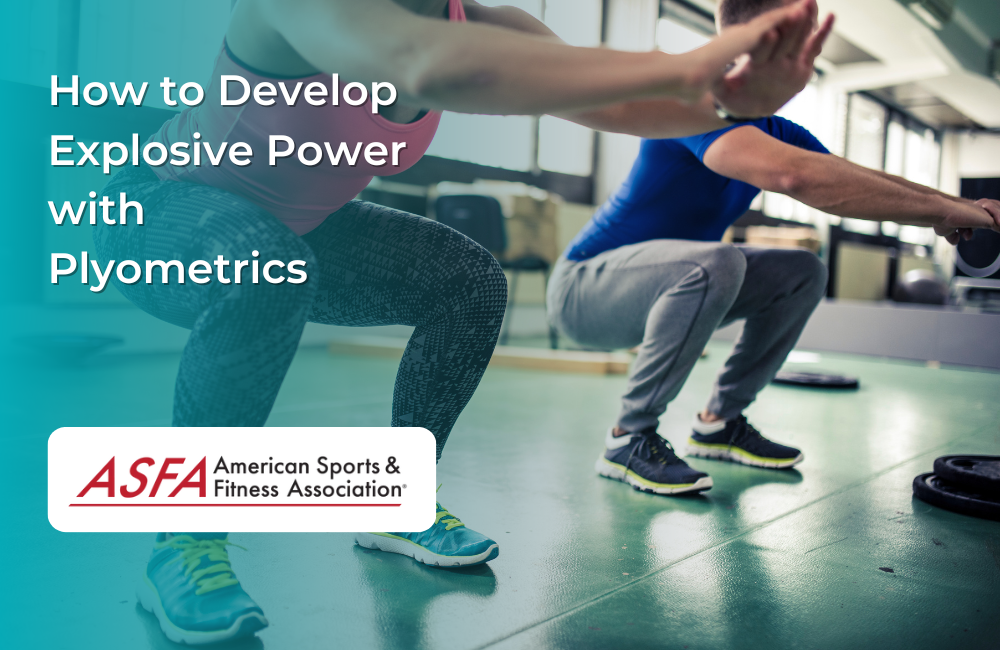Plyometrics is one of the most effective methods for developing explosive power. Plyometric exercises are often used in sports training to improve athletic performance, and they can also be used by non-athletes as well. When properly performed, these exercises will help increase your speed, strength, and overall athleticism.
Plyometrics is a method of exercise that increases the speed of movement and muscular power.
It's based on the stretch-shortening cycle, which is an adaptation of the muscle contraction-relaxation process. The muscle contracts, then relaxes, and then contracts again--and it does this faster than normal. You can think of plyometrics as "bouncing" instead of lifting weights or doing push-ups or sit-ups: The more force you apply to your muscles at once (by jumping up), the more energy they'll have when they recoil back down into their resting positions. This means that over time you'll get stronger at those movements!
The benefits? Increased speed and agility while reducing injury risk due to reduced impact forces associated with running/jumping/etc., all while burning calories like crazy without even realizing it!
Plyometrics can help improve performance in many sports.
Plyometrics is a type of exercise that can help improve your overall athleticism and explosiveness. Explosiveness is important for many sports, including basketball, football, and soccer.
Explosive power is important in many sports because it allows players to generate force quickly and powerfully. For example:
- In basketball and volleyball, athletes need explosive leg muscles so they can jump high enough to dunk or spike the ball over the net. Their legs must also be strong enough for them to run fast without getting tired too quickly.
- In football (American football), linebackers need quick reflexes as well as great speed when chasing down ball carriers on running plays or making tackles from behind after passes have been thrown into their zone coverage area.
- In soccer, defenders must have fast reactions to intercept passes or clear the ball from their penalty area. They also need strong legs so they can run up and down the field for 90 minutes without getting tired.
- In baseball, players use explosive power to throw fast pitches past hitters and hit home runs over the fence when batting against pitchers who throw hard.
- In tennis and boxing, players must have powerful arms and shoulders so they can hit the ball hard enough to win points or knock their opponent out of the ring.
In all sports, explosive power is important for overall performance.
Plyometrics exercises you can do.
The following plyometric exercises can help you improve your explosiveness, speed, and overall athleticism. The best part is that there are so many different types of plyometrics exercises you can do. They're also a great way to start off your day if you're looking for an easy workout that will get your heart pumping while building muscle at the same time. In addition to improving strength and power, plyometrics also help improve balance.
- Squats - When you jump up from the squat position, your center of gravity changes rapidly. This forces your body to adjust quickly in order to stay balanced--which means that it's working hard even before you've started moving! You can start with a basic squat jump and work your way up to more advanced moves like bounding (which I'll explain below).
- To do plyometric jump squats, stand with your feet shoulder-width apart and squat down until your thighs are parallel to the floor. Then jump up as high as you can, pushing off from the ground with both feet. Land softly, then immediately jump again. Repeat for 10 to 12 repetitions.
- The key is to start slowly and gradually increase the intensity. If you're new to plyometrics, aim for three sets of 10 jumps per workout, with one day off between sessions. Once you've mastered that, add in a fourth set--but don't jump any higher than your body allows.
- Sprinting – This is one of the best ways to increase your power, but it's also an excellent way to improve your overall athleticism. Sprinting improves the ability of your heart, lungs, and circulatory system to work together in order to provide oxygen-rich blood throughout the body. This means that by improving cardiovascular fitness through sprinting, you'll have more energy for other types of exercise—and a higher level of overall health than if you were sedentary.
- You don't have to be a professional sprinter to benefit from sprinting. Even recreational runners can greatly improve their performance by adding sprint workouts into their training regimen.
- Weighted Jumps - Plyometric training can be performed with dumbbells or weighted balls such as medicine balls so you don't need any special equipment at home--just make sure that whatever object you choose is heavy enough so that it provides resistance without being so heavy that you won't be able to create enough momentum during each jump!
The sky’s the limit with plyometrics.
The sky's the limit with plyometrics as it is an excellent way to burn calories and build muscle. Because plyometrics exercises are so intense, your muscles will be forced to work harder than usual during the workout. This increased workload means that your body will burn more calories than it would during a normal exercise session!
Plyometric exercises use the stretch-shortening cycle to develop power in muscles. The muscles first lengthen when they contract (eccentric contraction), then suddenly shorten (concentric contraction) with greater force than normal.
Plyometrics exercises are safe if done correctly; however, it's important to be careful not to overdo it because too much impact on the joints can cause injury or pain if they're not accustomed to this kind of workout yet.
Conclusion
The key to developing explosive power is to practice plyometrics exercises. Jumping, sprinting and squatting are all great ways to build up your muscle strength and speed, so try them out today!





